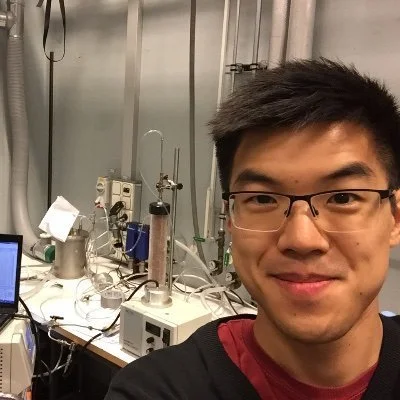Hello Jack Lin, Guest Researcher with the Environment and Climate theme
Jack Lin is a postdoctoral researcher at the Center for Atmospheric Research (ATMOS), University of Oulu, in Finland. He first came to LINXS in October 2023 to contribute to the work of the Environment and Climate theme, and returned to LINXS in the new year for a longer stay, which is ending 31st of March.
He is leader of the ATMOS experimental group in Oulu working with aerosol experiments and synchrotron radiation spectroscopy techniques to study the impacts of aqueous surfaces on cloud droplet formation in the atmosphere.
Read about his resarch interests and goals, and why he was attracted to come to LINXS in this short interview.
Jack Lin is a postdoctoral researcher at the Center for Atmospheric Research, University of Oulu in Finland.
What attracted you to LINXS?
I really like the idea behind LINXS of bringing together researchers who use X-rays and neutrons in their science. It’s been really nice to be at LINXS and regularly interact with researchers both within my theme and in other themes. I conduct experiments at MAX IV quite often, and it’s always a shame to be rushing out right after the experiment ends, so it was nice to be able to spend more time in Lund to prepare for the experiments and to be around afterwards to discuss results. This also sounds a bit bizarre, but being able to come down south during the winter was also a plus!
What do you hope to gain from your stay?
I hope to be able to strengthen the connection between existing atmospheric aerosol research in both Oulu and Lund to activities at MAX IV as well as learn more about what other researchers are doing with X-ray and neutron science.
What have you done during your time at LINXS?
My visits have been centered around beamtimes at MAX IV. There have been four in total, so I’ve been busy! I have also gone back to my research roots and spent time working in the Lund University Aerosol Lab.
What are your research interests?
I am interested in using X-rays to study properties of atmospheric aerosol and droplets. Synchrotron light allows us to directly measure the chemical composition at the surface of these particles and droplets, which is important for a lot of chemical and physical processes that occur in the atmosphere that influence air quality, climate, and human health.
What are your future research goals?
So far my measurements have been on fairly simplified model systems. One of my immediate research goals is to develop protocols and techniques to measure on more realistic systems to more accurately represent the atmosphere. I am also interested in utilizing other X-ray measurements such as scattering techniques.
Contact Jack Lin:
jack.Lin@oulu.fi

